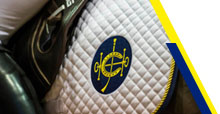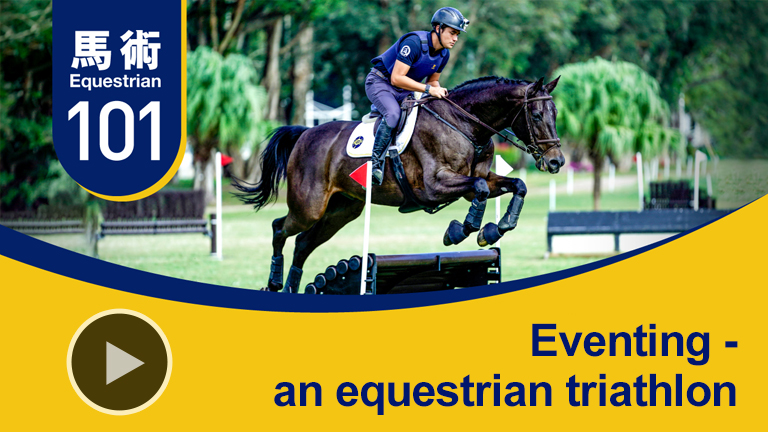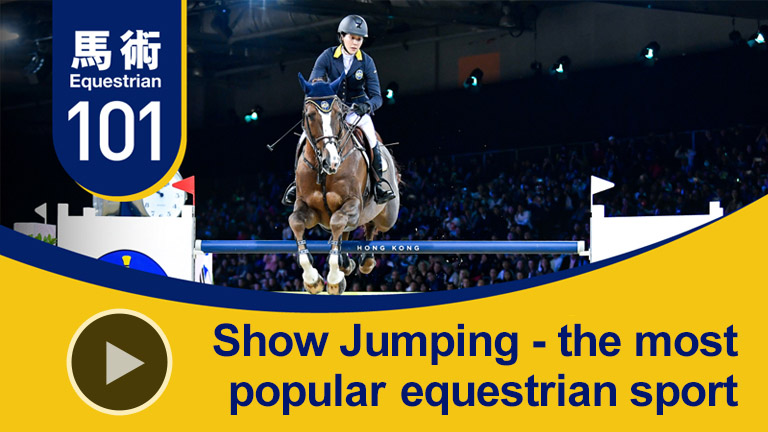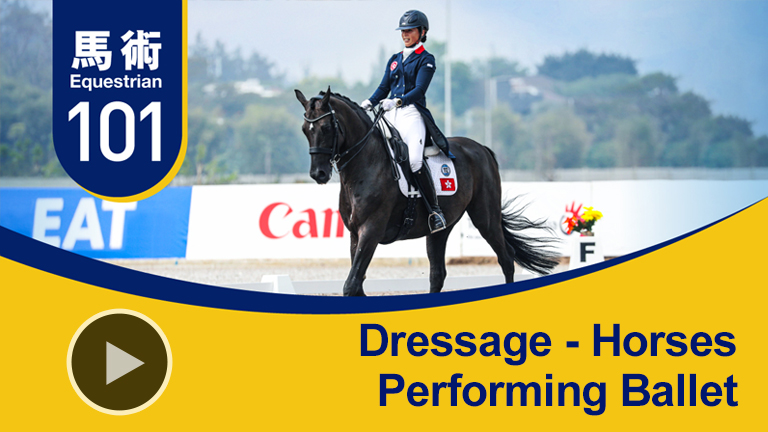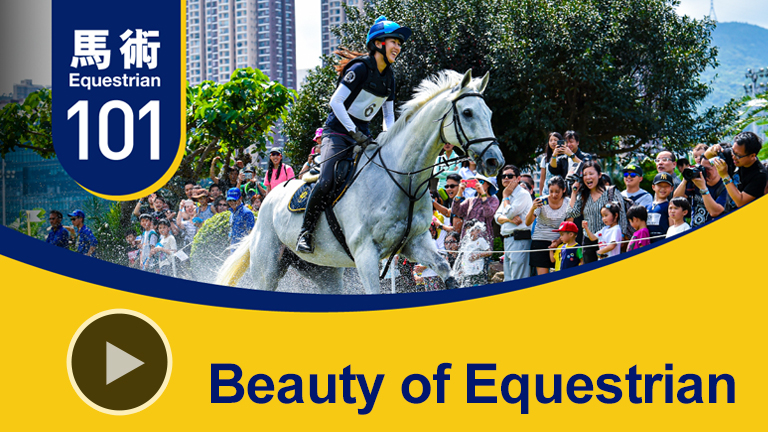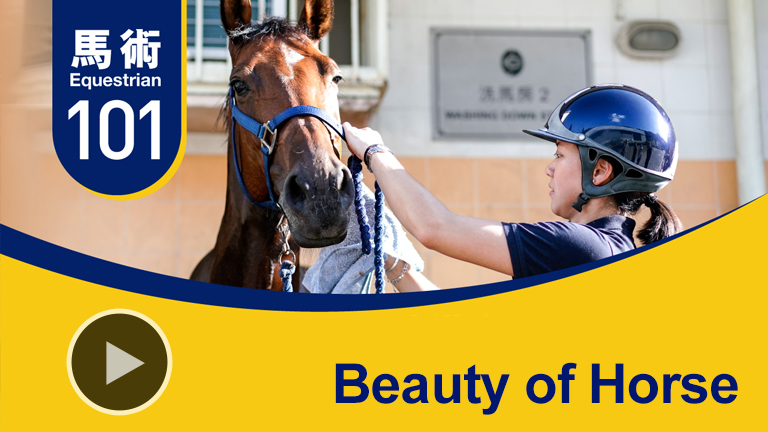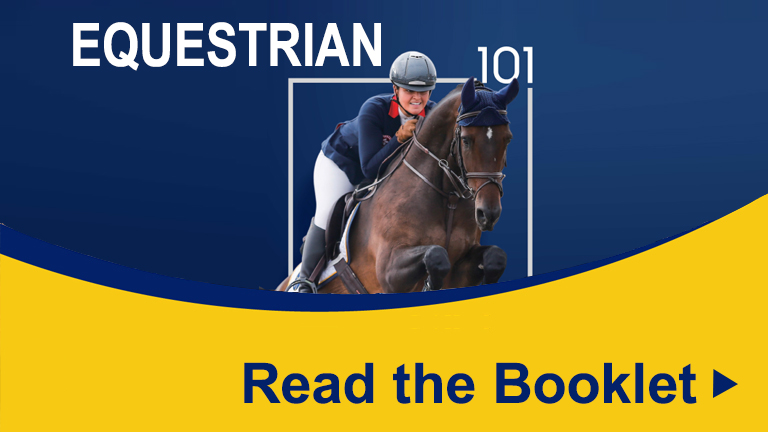

About HKJC
Striding on together - the HKJC and equestrian sport share the same spirit of partnership and commitment to excellence.
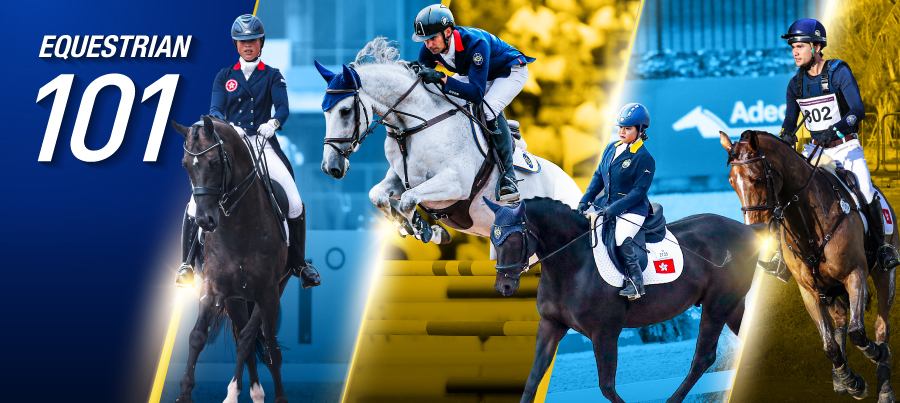
Equestrian sport is all about horsemanship. At its best, it requires perfect understanding, communication, co-operation and partnership between a rider and his or her horse. Equestrian sport can be regarded as the ultimate in team sports: the rider and horse must work together for years to create the perfect partnership and to hone feats of grace, agility and speed.
International equestrian sport comprises eight disciplines, of which the most popular in Hong Kong are Show Jumping, Dressage, Para dressage and Eventing.
Show Jumping
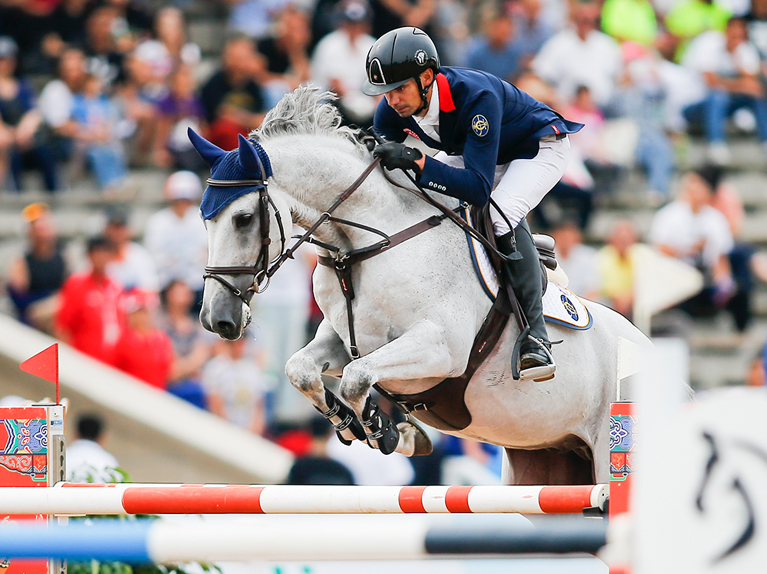
Show Jumping started in the early 1800s and is still the most popular equestrian sport. In this discipline, horse and rider are required to jump a course of fences without knocking the rails – or landing in the water jump. Faults will be picked up for every fence knocked down and for the first time a horse refuses to jump a fence. Time faults will be added if the horse and the riders do not complete the course in the time allowed.
Depending on the classification of the event and its rules, a jump-off may take place to determine the winner. The jump-off course may be shortened with fences raised, and or ridden against the clock. A second jump-off may take place in certain cases.
At the Olympics in 2020, the first competition is an individual qualifier, with the thirty best going followed to the individual final on day two. The team competition starts on day three and is open to twenty teams. This is the team first round, for teams of three horses and riders. Only the top ten teams go forward to the team final, taking place on the last day. The final includes a jump off and the fences are set to a height of 1.65 meters.
Dressage
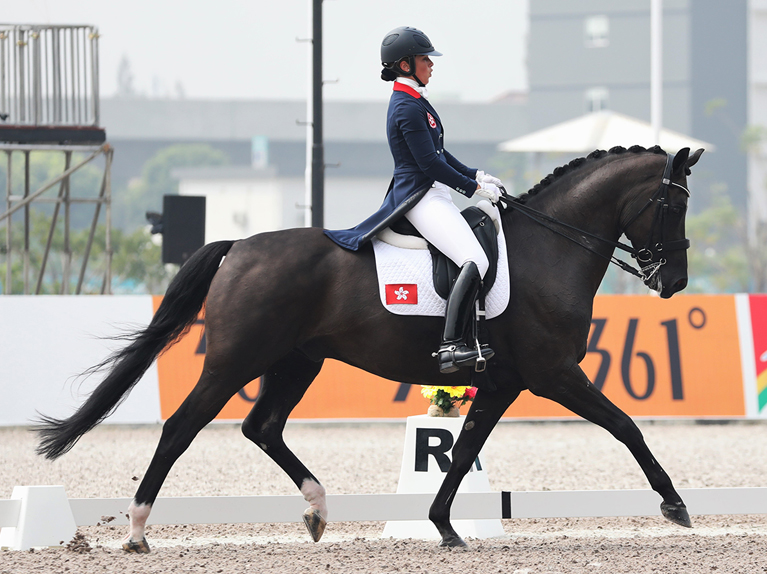
Dressage, derived from a French word meaning “to train”, dates back to the Renaissance era, when it gained recognition as a great training method for European cavalries. Often described as horses performing ballet, horse and rider must work together, in harmony to perform a routine of beautifully-choreographed set Dressage movements.
Dressage involves the horses and riders performing set movements in 60 x 20 metre or 40 x 20 metre arena. Tests are tailored to suit different standards. National federations set their own tests and rules based on those of the International Federation for Equestrian Sports (FEI) which governs the sport worldwide and schedules the international calendar.
Dressage at Olympic level, there are three separate competitions – the Grand Prix, which decides the team medals; the Grand Prix Special, which is equivalent to the individual semi-final; and the freestyle to music, which is choreographed by each rider. Horse and rider execute their own routine, set to music and are given marks for technical execution and artistic flair. The freestyle is final decider for the individual medals.
Para dressage
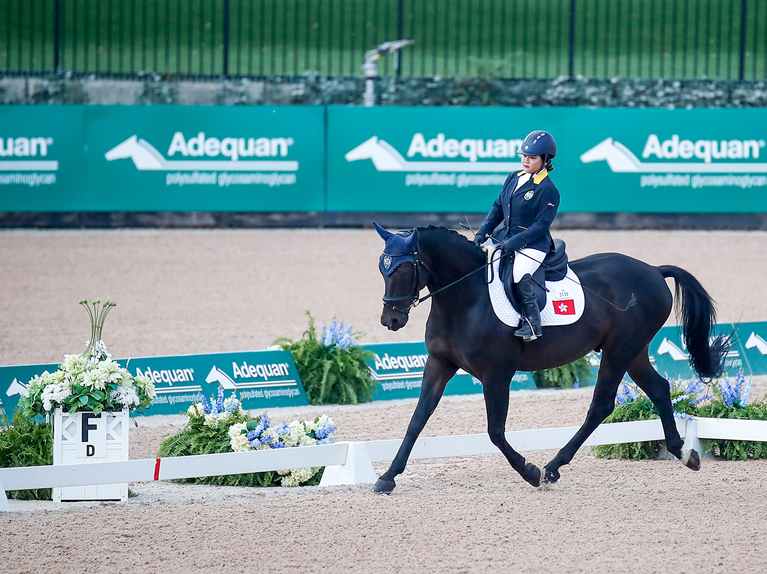
Para dressage is a Paralympic Sport and is the same as its Olympic equivalent, other than adaptations for athletes with physical impairments. Athletes are grouped in “Grades” depending on the level of their disability. Grade I is the most impaired, with Grade V as the least impaired. Horses and riders perform dressage tests, designed to match their physical capabilities. As with dressage, there is a team test to decide the team medals and an individual and freestyle competitions that determine two sets of individual medals.
Eventing
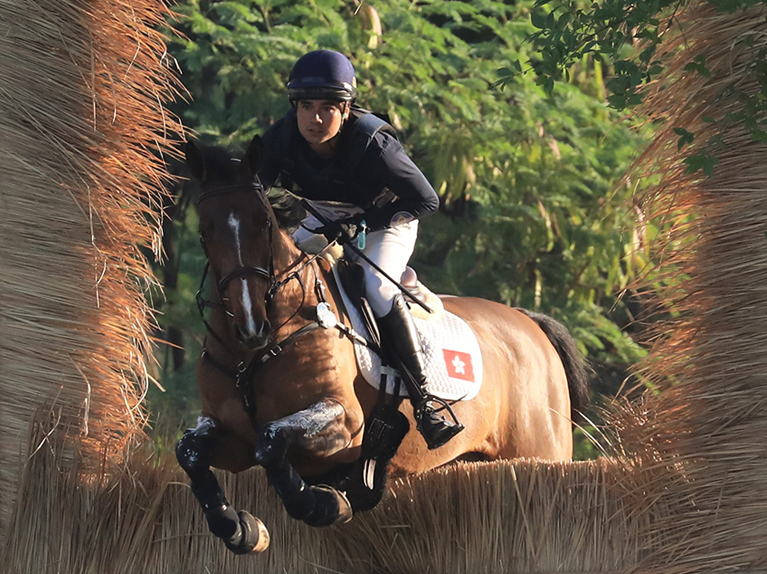
The Eventing competition is like an equestrian triathlon that combines both the Dressage and Show Jumping disciplines and adds a third – a cross-country test, featuring natural obstacles including ditches, banks and water jumps. The competition starts with a dressage test, followed by a cross-country day, when horse and rider tackle a course of fixed fences at speed. The final phase of Eventing is the show jumping. Competitors must ride the same horse throughout all three phases. This format takes place over one, two or three days. The total score of the three phases determines the winner; the combination with the least penalties coming out on top.

